Abstract
Data from Ontario dairy cattle herds which had had a high average milk gel index for 1978 (cases) and from other herds which had had a low average during the same period (controls) were collected and analyzed using case control techniques. The purpose of the study was to contrast factors of husbandry and management between the two groups and to determine the relative contribution of each of these factors on mastitis (as determined indirectly by the milk gel index) at the herd level.
Control herds had higher average production levels than did case herds, shipping 1807 litres more milk per cow per year. Milk from control herds averaged 0.06 percentage points higher in butterfat, 0.19 percentage points higher in lactose and 0.05 percentage points lower in total protein. However, many factors can influence production, therefore these latter differences, in both shipped milk and composition, can not be attributed solely to differences in the prevalence of mastitis between the two groups.
Control herds were more likely to use teat dip, receive regular veterinary service, use dry cow antibiotic preparations and have knowledge concerning subclinical mastitis than were case herds. Control herds also tended to raise more of their own replacements, have a higher culling rate for reasons of low production and have a more modernized dairy operation. Case herds, on the other hand, were more likely to scrutinize foremilk, use more milking units per operator and wait longer between the start of stimulation and attachment of the milking unit.
The study confirms, under natural field conditions, the importance of integrated mastitis control practices and also reaffirms the relative importance of practices such as the use of teat dips and dry cow antibiotic preparations.
Full text
PDF
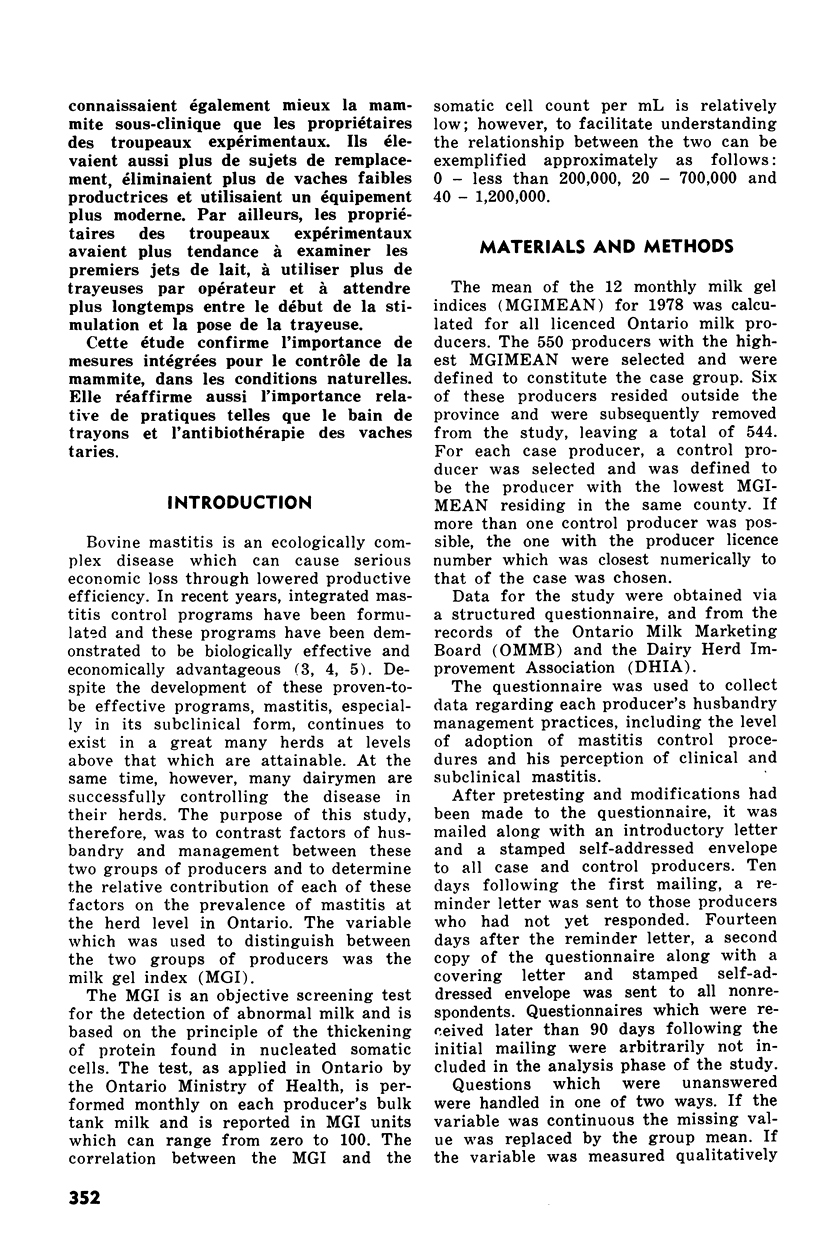
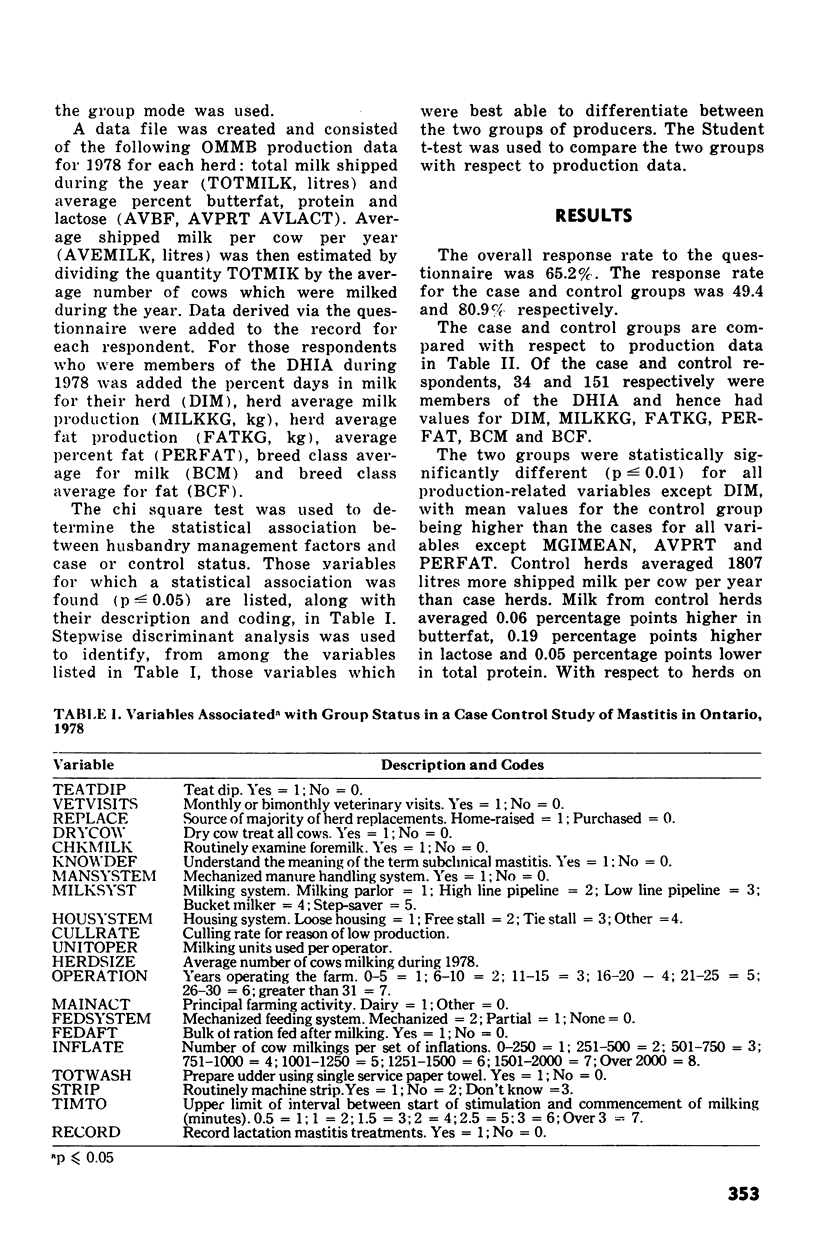

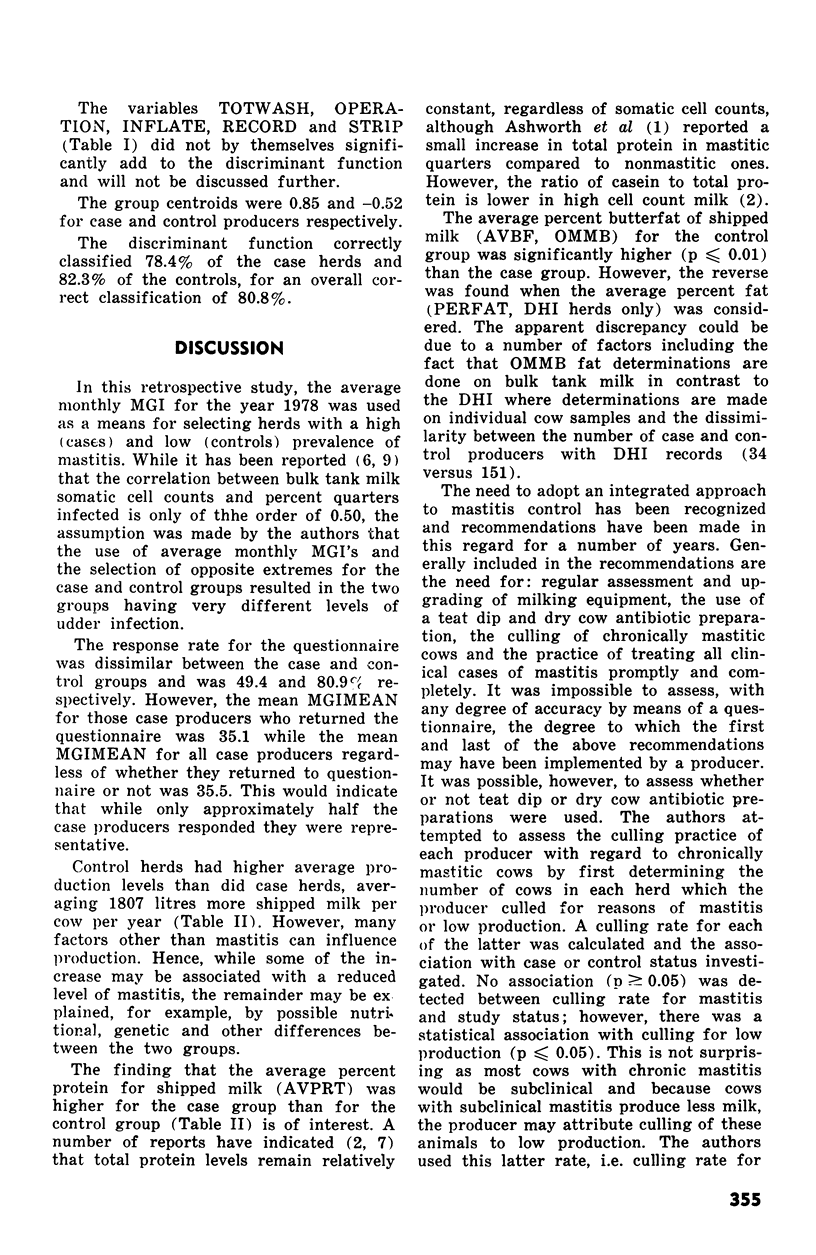
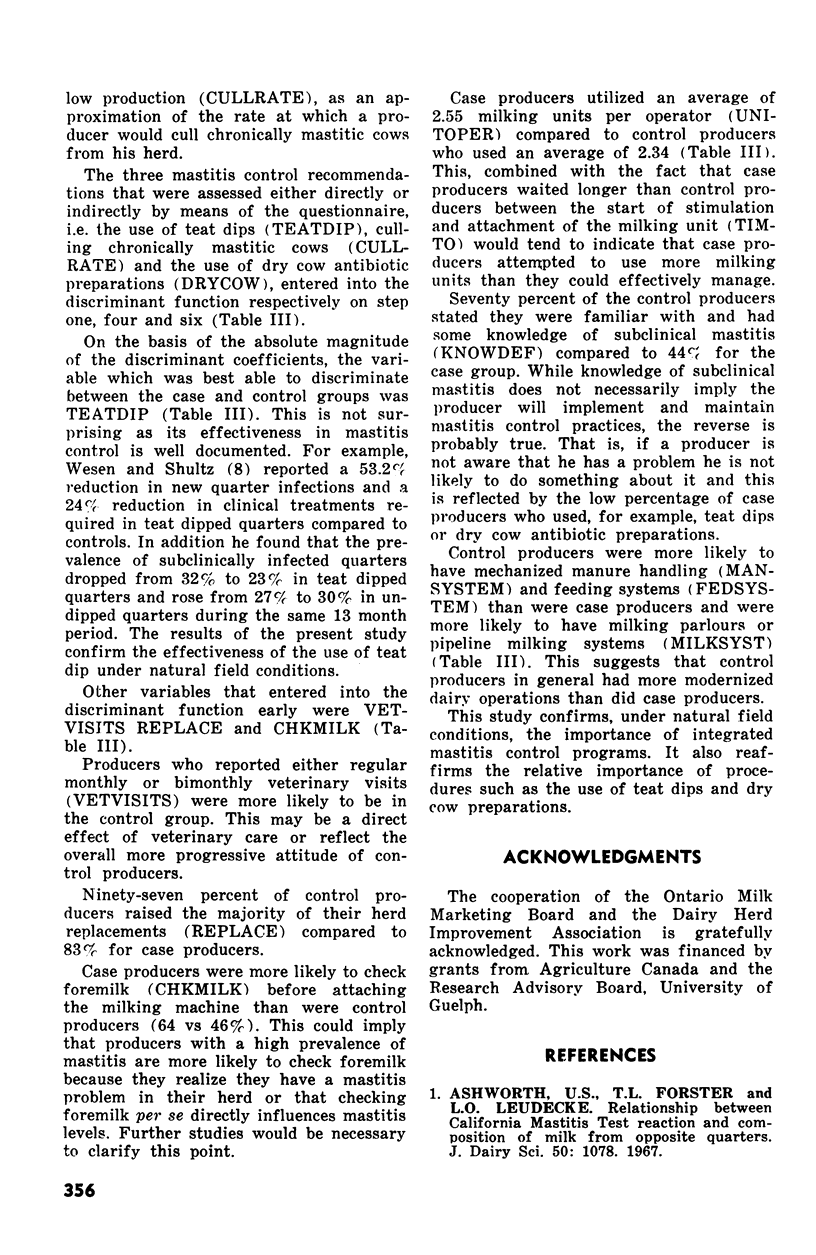
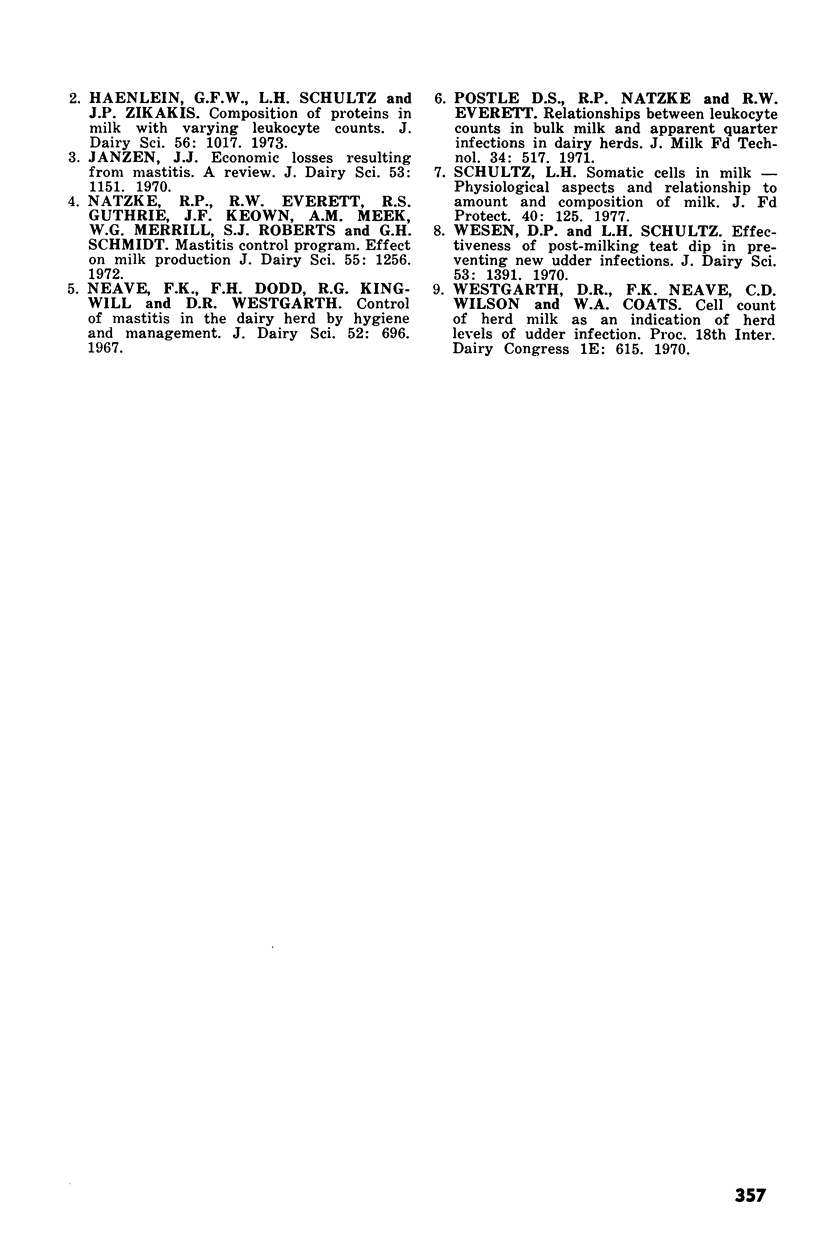
Selected References
These references are in PubMed. This may not be the complete list of references from this article.
- Ashworth U. S., Forster T. L., Luedecke L. O. Relationship between California mastitis test reaction and composition of milk from opposite quarters. J Dairy Sci. 1967 Jul;50(7):1078–1082. doi: 10.3168/jds.S0022-0302(67)87568-4. [DOI] [PubMed] [Google Scholar]
- Haenlein G. F., Schultz L. H., Zikakis J. P. Composition of proteins in milk with varying leucocyte contents. J Dairy Sci. 1973 Aug;56(8):1017–1024. doi: 10.3168/jds.S0022-0302(73)85299-3. [DOI] [PubMed] [Google Scholar]
- Janzen J. J. Economic losses resulting from mastitis. A review. J Dairy Sci. 1970 Sep;53(9):1151–1161. doi: 10.3168/jds.S0022-0302(70)86361-5. [DOI] [PubMed] [Google Scholar]
- Natzke R. P., Everett R. W., Guthrie R. S., Keown J. F., Meek A. M., Merrill W. G., Roberts S. J., Schmidt G. H. Mastitis control program: effect on milk production. J Dairy Sci. 1972 Sep;55(9):1256–1260. doi: 10.3168/jds.S0022-0302(72)85658-3. [DOI] [PubMed] [Google Scholar]
- Neave F. K., Dodd F. H., Kingwill R. G., Westgarth D. R. Control of mastitis in the dairy herd by hygiene and management. J Dairy Sci. 1969 May;52(5):696–707. doi: 10.3168/jds.S0022-0302(69)86632-4. [DOI] [PubMed] [Google Scholar]
- Wesen D. P., Schultz L. H. Effectiveness of a post-milking teat dip in preventing new udder infections. J Dairy Sci. 1970 Oct;53(10):1391–1403. doi: 10.3168/jds.S0022-0302(70)86406-2. [DOI] [PubMed] [Google Scholar]


